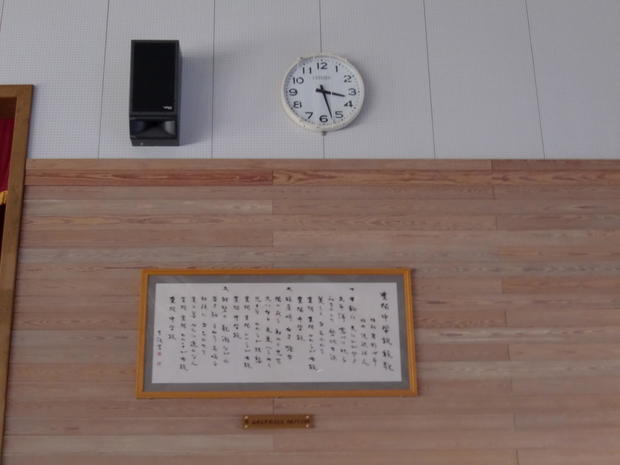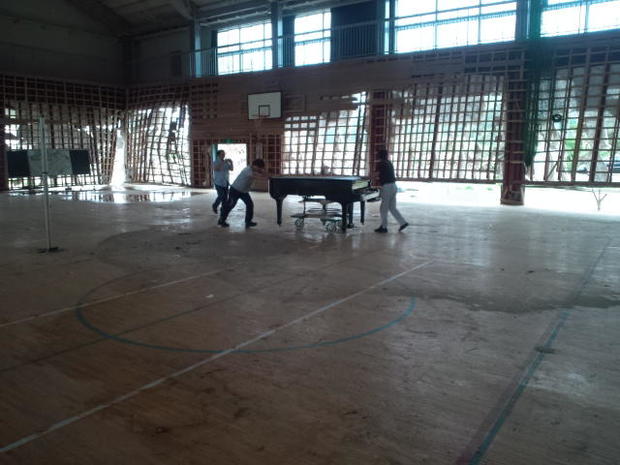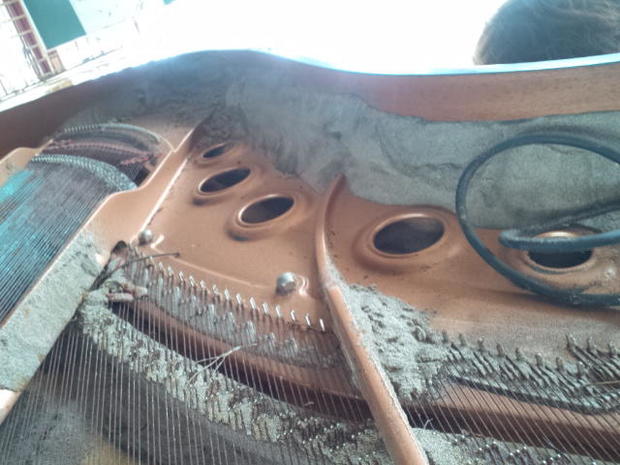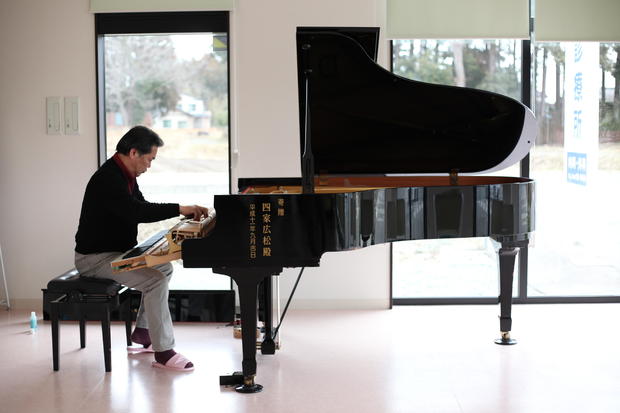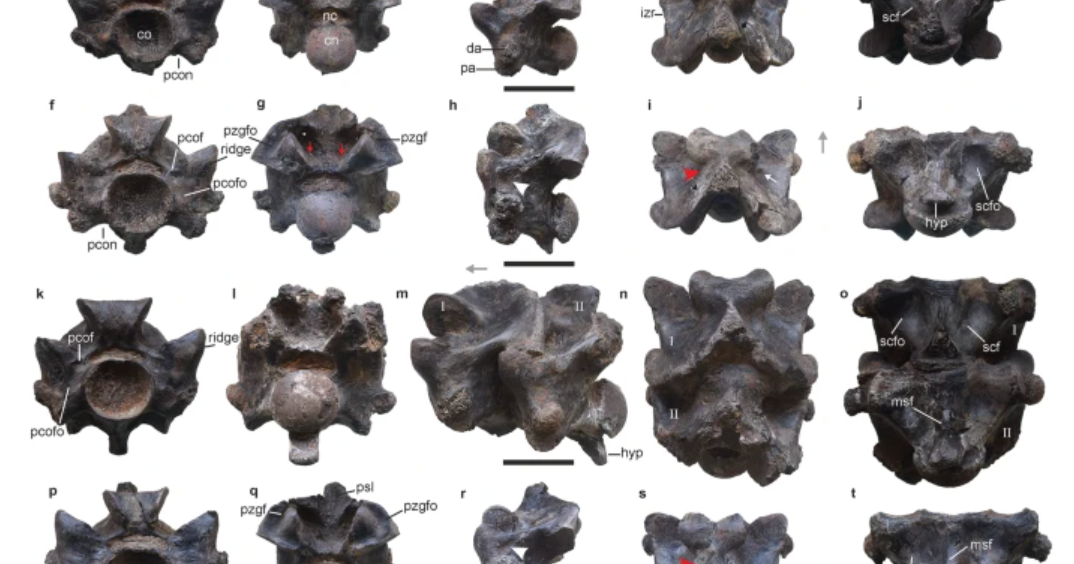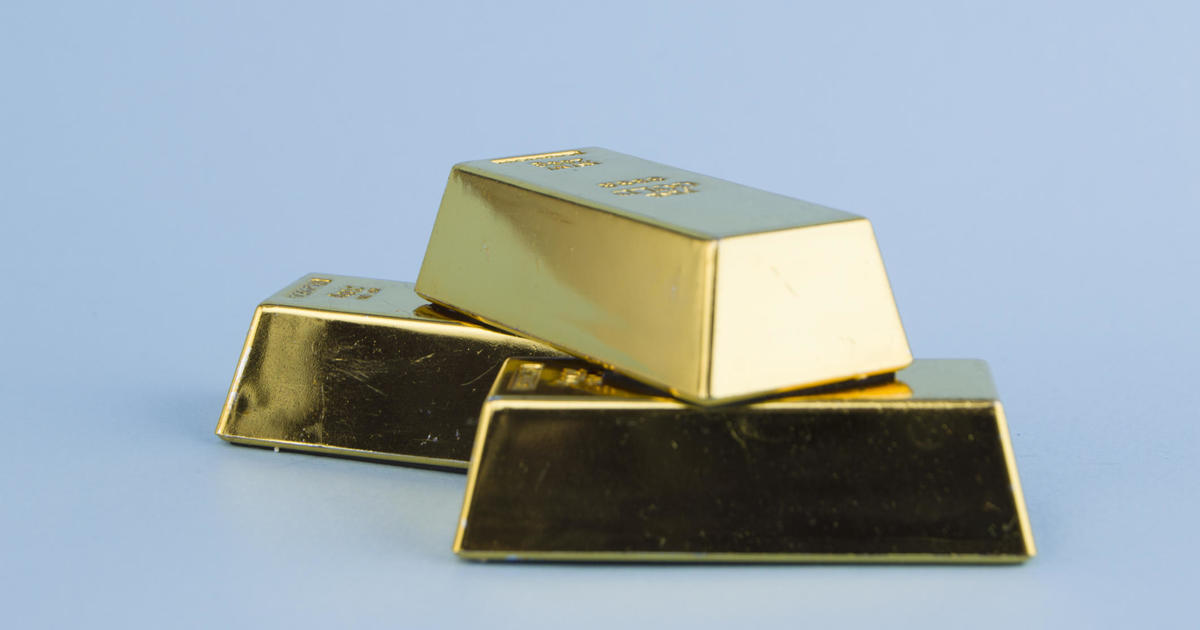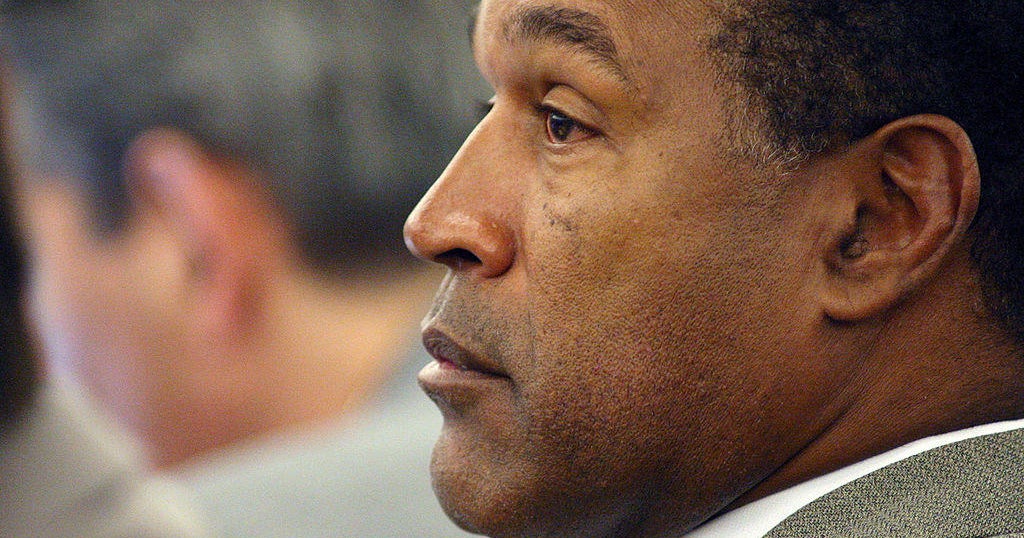How one man's determination to resurrect a "miracle piano" helped heal Japan's tsunami scars
Iwaki, Fukushima, Japan — Graduation day dawned sunny and beautiful at Toyoma Junior High, and the 47 members of the senior class were in a buoyant mood. Just being at Toyoma Junior High was a day at the beach: The school overlooked Usuiso, one of Japan's most popular strips of seashore, and the giddy mood was captured in a scrawled blackboard message: "Thanks for the last three years! It's been fun!"
In the gym, as teachers, families and classmates looked on, the students in their navy-colored uniforms sang the school song for the last time, accompanied, as always, by Toyoma's fine grand piano.
Instead of the cheaper uprights usually purchased by schools and parents, Toyoma was blessed with a performance-grade Yamaha "C5" grand piano, gifted by a local seafood magnate whose granddaughter was an alumna.
For more than a decade, the piano supplied the soundtrack for Toyoma Jr High, serenading new students in April, accompanying school choruses and sending off the graduates every March.
After a morning of speeches and diplomas, the class of 2011 strode out into the world. They never imagined that it was about to be turned upside down.
Disaster strikes
According to a local nonprofit group, it took two months for a Ground Self-Defense Force unit to get around to digging out the gym, whose beachside location left it exposed it to the full fury of the devastating tsunami that slammed into Japan's eastern coast that year.
Fortunately the school had emptied out a few hours before the 28-foot waves hit, leaving the gym clock frozen at 3:28; but over 100 other residents of Usuiso district would lose their lives.
As the rescue workers waded through knee-high debris, their commander suddenly noticed the grand piano off in a corner of the stage, sadly toppled onto its side. Deciding the instrument might hold sentimental value for local residents, field officer Isamu Yamaguchi ordered his men to gently carry the sad wreck to the middle of the gym floor, where they used their bottles of drinking water to carefully wipe away the mud.
Later, in an emotional gathering organized by the PTA, several hundred Usuiso district residents would gather around the now-mute piano to sing the school song a cappella. The gym would be razed soon after.
But before that happened, Hiroshi Endo showed up.
"No time for me to be away"
If he'd had his way, Endo wouldn't have been anywhere near Fukushima at the time.
His Iwaki home and piano store had escaped the earthquake and tsunami unscathed, but then radiation levels spiked after the accident at the Fukushima Daiichi nuclear power plant 30 miles north.
Terrified, he and his family fled 150 miles south, to the prefecture of Chiba. But then his phone started ringing off the hook.
"Lots of clients contacted me, saying their pianos had fallen over (in the earthquake). I thought, this is no time for me to be away," he told CBS News at his shop. Despite grave misgivings, Endo returned.
He heard about the ruined piano sitting in the Toyoma Junior High gym, and curiosity got the better of him.
"The outside was quite clean, but inside, it was full of muck." Unsalvageable, he thought.
But an inscription on the piano's right flank caught his eye: "Donated by Hiromatsu Shike, September, 1999." This was no standard school procurement, he realized, but tangible evidence of the spirit that bound this community together.
Dogged by the discovery, after 10 days he made up his mind: He would attempt to make the piano sing again. After several months of wrangling red tape with the school board, at last, ownership of the 770-pound instrument was transferred to Endo.
You never wash a piano
"By then, it smelled awful," he recalls. "Rot had set in." The strings were rusted. Most of the keyboard had been torn away, and the few remaining keys uttered a strangled sound.
Inside, the piano was so full of grit it looked like a sandbox. Endo's two sons, also piano tuners and technicians, declared the instrument beyond saving.
With no idea where to even start, Endo began by dismantling the piano's 10,000 components. Most of the hammers, dampers and other parts, he quickly determined, would have to be replaced, at a cost of thousands of dollars — from his own pocket.
Next, he had to figure out how to wash the instrument, a prospect that gave him agita. "Normally, water is a piano's enemy," he said. "You should never wash one!" But there was no choice.
The salt deposits had to be removed using a special cleanser. Throughout the fall of 2011, the Endo family toiled way on the restoration.
"We had no confidence," he said. "We had never tried to repair a tsunami-wrecked piano before."
"A ray of hope"
But as word of their painstaking restoration spread, the weight of expectation grew. It was still 2011, after all, and the country remained deeply traumatized. A Tokyo TV network, TBS, told Endo they wanted what was now dubbed the "Miracle Piano" to star on their Christmas eve show, so the team raced to finish.
"People needed a ray of hope," said the soft-spoken piano technician.
Endo can't say whether it sounds the same as before, but musicians have praised the piano's soft, mellow quality and its "warm" keyboard. Over the last decade, the Toyoma piano has traveled to dozens of cities, been played by pop stars as well as schoolchildren, and heard as far away as Taiwan and Singapore.
In one key aspect the instrument remains unrepaired: The tsunami-inflicted scratches and gashes marring the piano's otherwise glossy onyx finish were deliberately left untouched — scars that move viewers to tears.
"Lots of people have touched the piano and said to me, 'Endo-san, you worked hard on the restoration, but this piano — it really went through a lot, and endured.'"
Looking around his small shop chock-a-block with pianos, evidence of his 40-year career making them whole again, the 62-year-old restorer would seem to have a soft spot for ailing instruments.
But in this case, the piano was almost beside the point. Endo was really trying to mend broken hearts.
"The students had lost everything. Their school was gone, their relatives dead or injured. The kids were far more deeply affected by the disaster emotionally than adults," he told CSB News. "We wanted to show them, 'Look! We fixed it!' Despite all the tragedy, there was this one small thing we made normal again."
